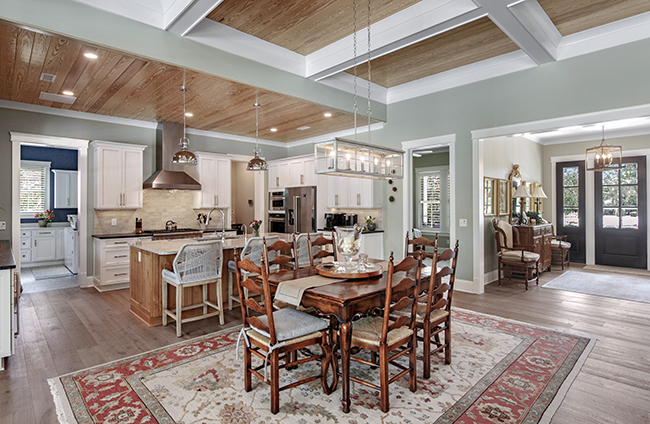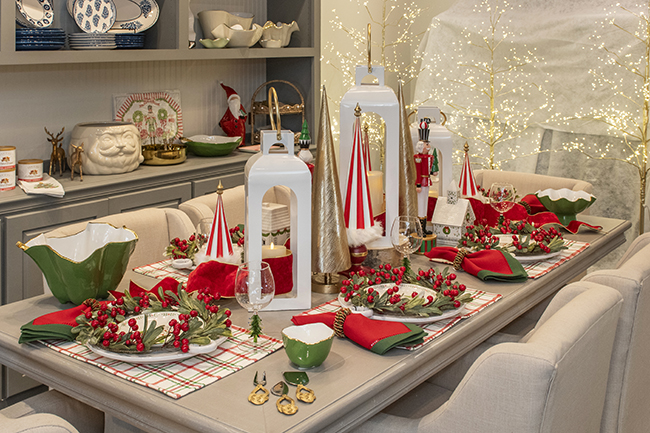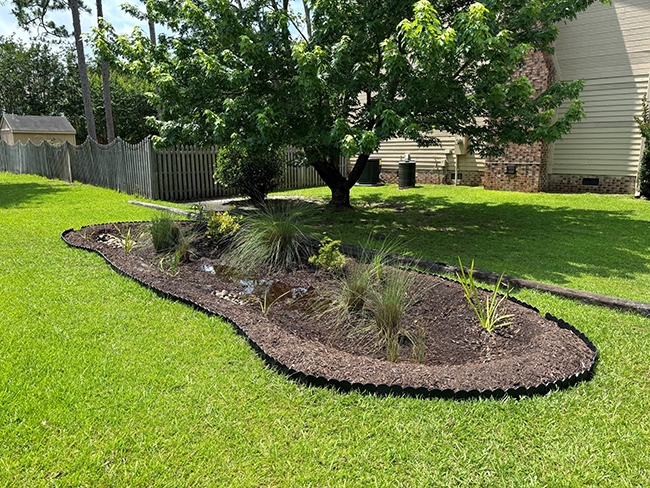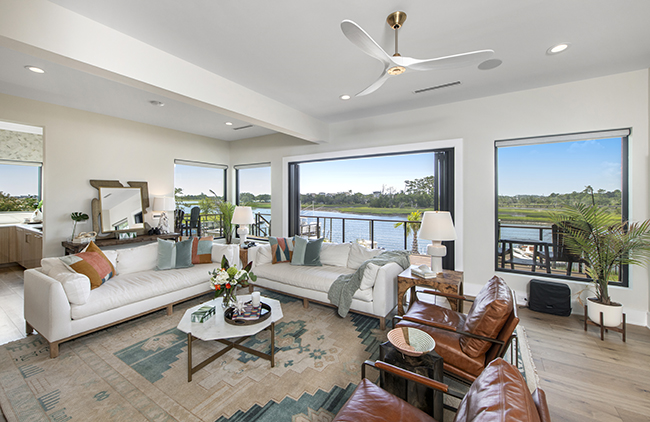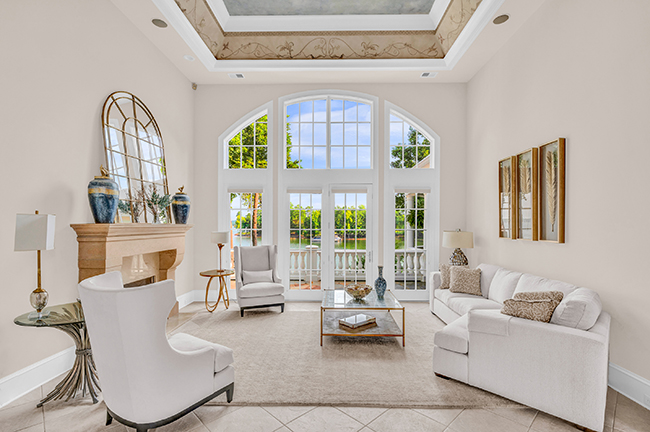From Kit to Wondrous and Welcoming
04 Sep 2022
A 106-year-old house from Sears Roebuck is brought back to life
By Lori Wilson Photos by G. Frank Hart
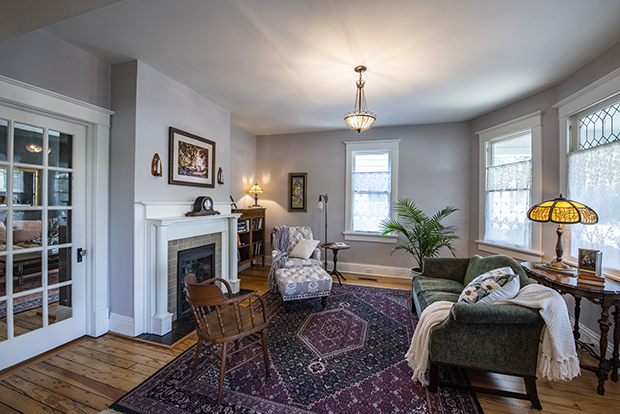
In the early 1900s, Sears Roebuck and Co. sold just about everything via catalog – from ladies’ hats to harmonicas to, believe it or not, homes in a box. These future dwellings would arrive in large crates via rail lines, such as the Atlantic Coast Line Railroad, whose historic Wilmington station once sat at the corner of Red Cross and Front Streets.
In 1912, Wilmington resident Mr. Thomas Henderson and his wife Mary ordered such a house kit for the bargain price of $753. Though, don’t be fooled – that did not include the cost of labor, cement, brick, and plaster, which, according to the Sears advertisement, could be scored for another $800 or so. Among many options, Mr. Henderson and his wife chose Model #167, boasting a “well-proportioned” house of eight rooms, bay windows, and a large front porch.
Today, more than a century and several renovations later, Kenyon Mussell and his fiance Emily Lloyd keep the history of their Sears model home alive. The Historic Wilmington Foundation plaque flanking their front door honors the Hendersons, the first owners of the stunning two-story home.
An Evolving Footprint
Since purchasing the home in 2018, Mussell has learned a lot about his sweet piece of history.
“They [Sears] really were like the Amazon of their day,” Mussell says as he shares his replicated copy of the early 1900s Sears model catalog.
In 1908, he explains, the business began offering complete, packaged materials for houses, though it was not until 1916 that these models shipped as kits, with all the lumber and flooring pre-cut, numbered, and ready for quick assembly. As a result, the Henderson House differs slightly from the advertised #167.
In its original design, the home would include an octagonal turret on the upstairs corner, as well as two bay windows in the dining room and parlor on the first floor. However, it seems the Hendersons chose to convert the turret into three front-facing panes and stack the bay windows on the bottom and top.
“I think it makes the space much more functional,” Mussell says.
If the home were ordered as a kit instead of a catalog model, he explains, this customization likely would not have been possible.
And it appears the Hendersons made additional improvements not long after their original build. The galley-style kitchen features an extension of several feet, allowing for a large dining room table, the space beaming with natural light, a serene view of the brick courtyard, and the peaceful noise of the koi pond adorned with hyacinths.
The windows in the dining area match those of the original Sears components and because the walls feature plaster, Mussell suspects that the kitchen addition was made not long after the home’s 1912 birth.
Above the sink, a lovely stained-glass window continues the tone of the antique home, despite the glass’s origin and age being unknown (Mussell hasn’t found the exact window in a Sears catalog just yet).
Even modern updates in the kitchen reflect styles of the early 1900s, such as the quartz countertops that mimic Carrera marble, popular in early 20th century design.
A Blessing in Disguise
Mussell spent only two nights in his then 106-year-old house when Hurricane Florence came roaring through harder than the 1920s. Like many Wilmington residents, Mussell fled from the 2018 storm. He came home to a giant oak tree crushing the front left corner of the historic Henderson House.
Soon, he found himself in contact with Tommy Rogers of Rogers Building Corporation, a well-known builder with a knack for historic home preservation and restoration, who has worked on notable landmarks such as the Bellamy Mansion. Interior designer Debby Gomulka introduced Mussell to Rogers, after he consulted with her on wall colors for the downstairs.
“The joy is the pleasure of saving something of a historic nature and bringing it back to life,” Rogers explains. “Kenyon wanted to put it back together as close as we could to the original. That’s what I like to do.”
While some materials, such as the dreamy slate roofing, can still be easily sourced, others, like moldings, have to be custom-made to fit the home during rebuild, Rogers says. Mussell also leaned on Legacy Architectural Salvage (see Southern Drawl, page 40) for small finishes such as original Sears model hinges, doors, and door knobs.
“I really was happy about being able to put that slate roof back on,” Rogers explains. “While the interior of the home had been upgraded over the years, one of the things we did was re-siding a significant part. A lot of it had been replaced but not done well. The most important thing I tell people about these older homes is the envelope (the area between the interior and exterior components).”
While Mussell’s historic home appeared fine from its picturesque curbside portrait, significant issues soon made themselves known, such as a leaking roof and rotting siding. Fortunately, during hurricane repairs, Rogers uncovered structural issues left by former owners that called for repair.
Despite its challenges, Rogers says that the historic Wilmington district neighborhood is his favorite place to work. Due to the tree destroying a smaller upstairs bedroom, Mussell took the opportunity to work with Rogers on transforming it into an additional bathroom. They also reorganized the original second story restroom to reflect the home’s early 1900s layout with, oddly enough, the best view in the house – a clear shot of St. Paul Episcopal Church’s steeple.
During renovations, small blessings arose. Because the downstairs flooded due to the oak-tree-sized hole in the slated roof, they removed the hardwood floors in the front downstairs hallway and parlor. While Mussell feared losing the original planks, instead a surprise came in the form of original heart pine, with amplified texture as a result of the Hurricane Florence water that enriched the grain and nail spots.
But the real gem arose in a small piece of paper, found behind a chunk of trim. When Mussell bought the home in 2018, he speculated that the Henderson House was mislabeled as a Sears model 167 because of the differences in roof design, etc., but had no proof – not until Rogers spotted that small piece of a packing slip that confirmed the model number.
Mussell treasures the unique memorabilia that provided many answers to questions about the century-old structure.
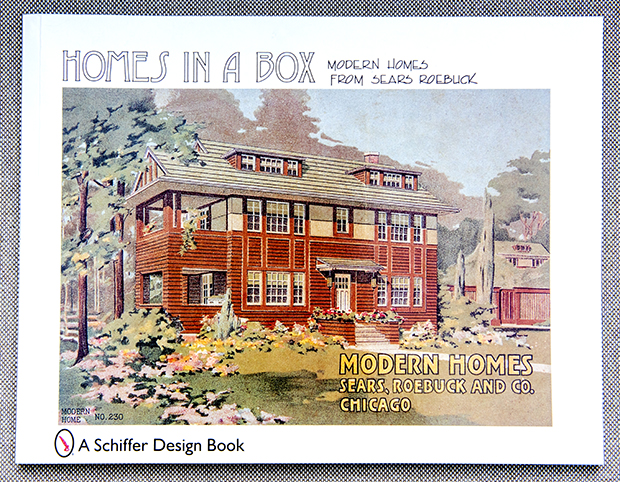
Decorating an Older Home
While Rogers advised on home restoration and he and his team executed the structural repairs, Mussell took a hands-on approach when he could, installing fixtures and tiles throughout the house.
Without having ever tiled before, Mussell placed and grouted handcrafted squares on the two downstairs fireplaces, complementing the fire brick and cast-iron surround. Recently, he and Emily teamed up to repair the working coal baskets, making it a working gas fire to replicate a proper coal-burning feature. This included all of the planning and research for installing two 30-foot flues by themselves.
We learn that Mussell’s do-it-yourself nature and attention to detail is inherited, as evidenced by the many decor items handcrafted by his family. In the front-room parlor, above the fireplace, a copy of his mother’s artwork appears, next to his grandmother’s hand-hammered copper candlesticks. In the guest bedroom lies a quilted patchwork blanket, worked on by all three maternal generations of his family, that fits perfectly with the cozy, antique themes of the house.
Respecting the delicate age of the space, Mussell and his fiancé have not rushed to furnish or decorate their home.
“We didn’t want to force things into the home,” Lloyd says. “We wanted to give it time to find the right pieces.”
Lloyd and Mussell’s romance, in some ways, evolved in correlation with the home’s restoration. Their families knew each other from childhoods in Georgia, where Lloyd most recently resided, but after entire lives in different states and even different countries (he lived in England for 22 years), conversations began again as a result of them sharing updates about home renovation ideas.
Lloyd followed her heart and joined Mussell in Wilmington in 2020. Since then, they have sourced beautiful pieces together, such as artwork by their shared Art Nouveau favorite, Alphonse Mucha. In the parlor, an antique saw-tooth bookcase, purchased locally from Flea Body’s Antique Mall, houses the couple’s collection. The living room maintains the historic home’s energy, but with a more eclectic design of bold and bohemian prints. Dark wood antique furniture pieces appear throughout the rest of the home, many coming from either Ivy Cottage or from their family’s pasts.
On the porch, a side table from Lloyd’s grandmother, restored by Mussell, serves as a spot for the couple’s morning coffee and occasional nighttime glasses of wine. Here, they enjoy views of the garden they’ve cultivated together. From a catalog emerged a truly wonderful home.




